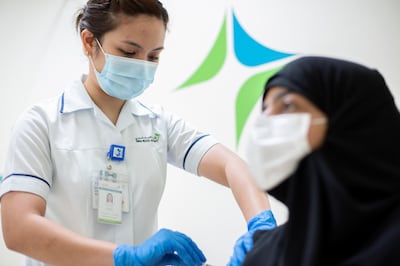The world is battling new mutant strains of Covid-19 that are wreaking havoc on embattled healthcare systems.
Governments have imposed fresh lockdowns and introduced travel bans to deal with the variants first detected in Brazil, South Africa and the UK.
These variants have particular mutations – changes to the virus’s genetic material – that affect the virus’s spike protein, the structure that allows the pathogen to attach to and enter human cells.
With more than 2 million people across the world having died of the coronavirus, how much of a threat are they and can we expect more?
"Flu, covid and polio throw up variants all the time," said Prof John Oxford, professor emeritus at the University of London and co-author of Human Virology, a landmark book about the subject.
“It’s come to the fore because of molecular techniques available for the first time to analyse the genome. We’ve got a lot more detail now.”
The coronavirus has undergone many thousands of mutations since emerging in 2019. Most are inconsequential – and some are harmful to the virus – but the mutations characterising the new variants make them more transmissible and therefore better able to outcompete other forms.
“They will rise to dominate geographical areas,” said Prof Ian Jones, a professor of virology at the University of Reading in the UK.
“It is unlikely that one variant will dominate the world, as different mutations can give the same outcome, so they will end up jostling with each other at the boundaries of where they arose.”
Variants are often referred to by the country in which they were first identified, but this is not necessarily where they arose. Some nations undertake much more coronavirus genetic sequencing, so are more likely to identify new variants.
Dr Andrew Freedman, an infectious diseases specialist at Cardiff University in the UK, said that vaccine programmes could lead to strains that can be transmitted even between vaccinated people becoming dominant.
"That's why we might have to tweak the vaccines," he said.
Here, we look at the key variants and consider what distinguishes them from others.
UK variant - wreaking havoc across 50 countries
Known by technical names including B.1.1.7, this variant has been traced to south-east England in September 2020 and has spread to more than 50 countries.
It is characterised by 17 mutations, including one called N501Y, which involves a specific change in the coronavirus spike protein's receptor binding domain – the part that attaches to human cells.
The RBD is a target for the immune system, so changes to it could potentially render vaccines less effective, because they work by stimulating an immune response.
Recent research suggests this variant is 30 to 50 per cent more transmissible than most forms of the coronavirus, not the 70 per cent first estimated.
The UK variant has been blamed for a rise in cases in Germany and the UK, but Prof Oxford said current surges in infections could be because lockdowns were eased over Christmas.
“Everyone had a free-for-all at Christmas. People’s behaviour has generated all these cases rather than the new mutant,” he said.
Although it spreads more easily, this variant does not make people more ill and despite concerns to the contrary, research has shown that even with N501Y the virus is still susceptible to vaccines.
South African variant - could evade the body's immune defence
Called B.1.351, this variant shares the N501Y mutation with the British variant, although the mutations happened independently.
The earliest coronavirus samples known to contain this variant date from October 2020 in South Africa, where it was linked to a surge in cases.
More transmissible than “regular” forms of the coronavirus – possibly because N501Y allows the virus to reach higher concentrations in upper parts of the human airway – this variant has been found in more than 20 countries. The US Centres for Disease Control has reported that it is the dominant variant in Zambia, for example.
One study has suggested that an additional spike protein mutation in this variant, called E484K, may make the virus better able to evade the body's immune defences. However, in common with the UK variant, the South African one does not make people any more sick.
Brazilian variant - could new vaccines be needed?
Two variants first detected in Brazil have also hit the headlines, the most concerning of which, known as P.1, has been found in travellers who arrived in Japan from the South American nation.
It is thought to have emerged in December in northern Brazil and has three mutations in the RBD, including N501Y and E484K.
Officials say there is no evidence that the variant is more resistant to treatment, but Prof Jones said it could be difficult to determine whether new forms caused more harm.
“The new variants haven't been tracked long enough yet to know if the rate of serious disease and death is lower than previously,” he said.
“It’s also confused by the fact that treatment generally improves with time, so the death rate is expected to drop anyway. How much is better clinical care and how much virus change might be hard to work out.”
Researchers are analysing whether the Brazilian variant may be better able to evade the immune response to vaccines, with the CDC reporting there is some evidence to suggest it might be able to. If new vaccines are needed, scientists could develop them in as little as a matter of weeks.















